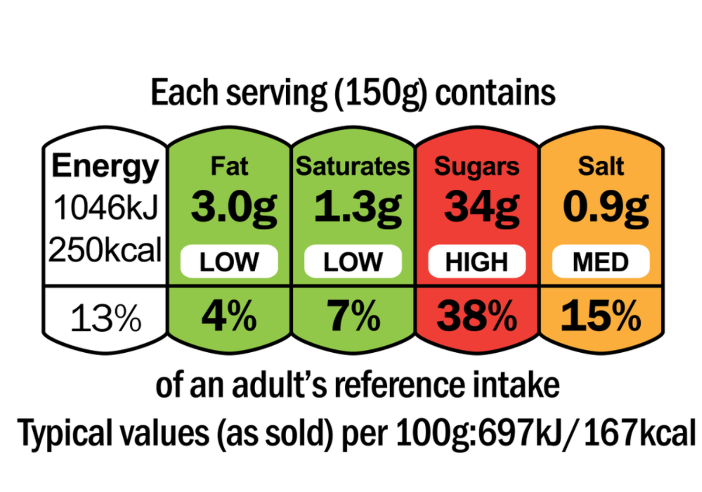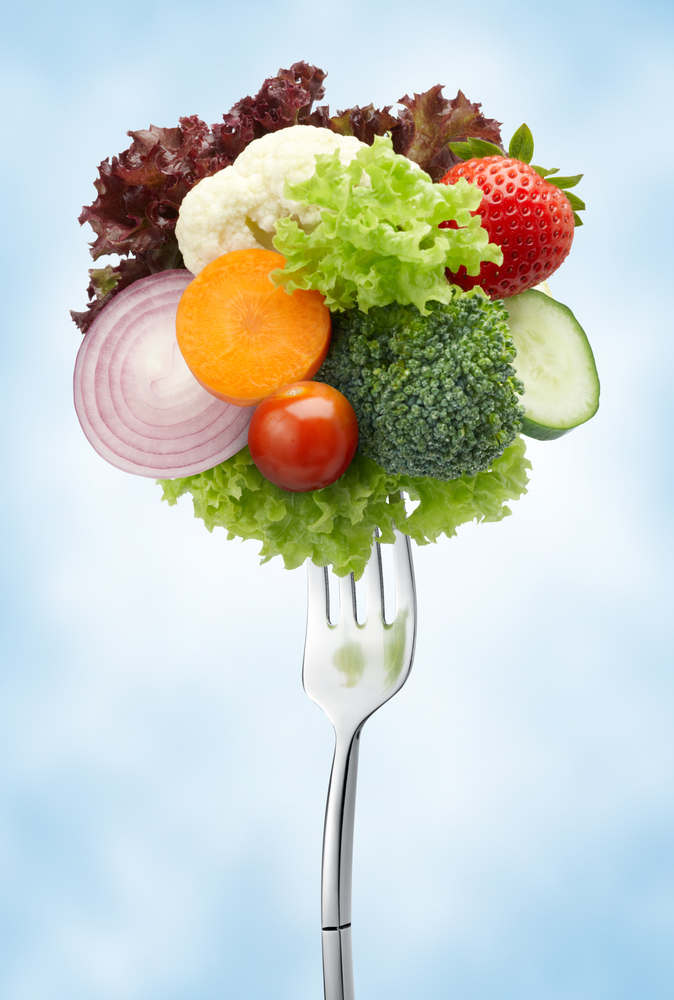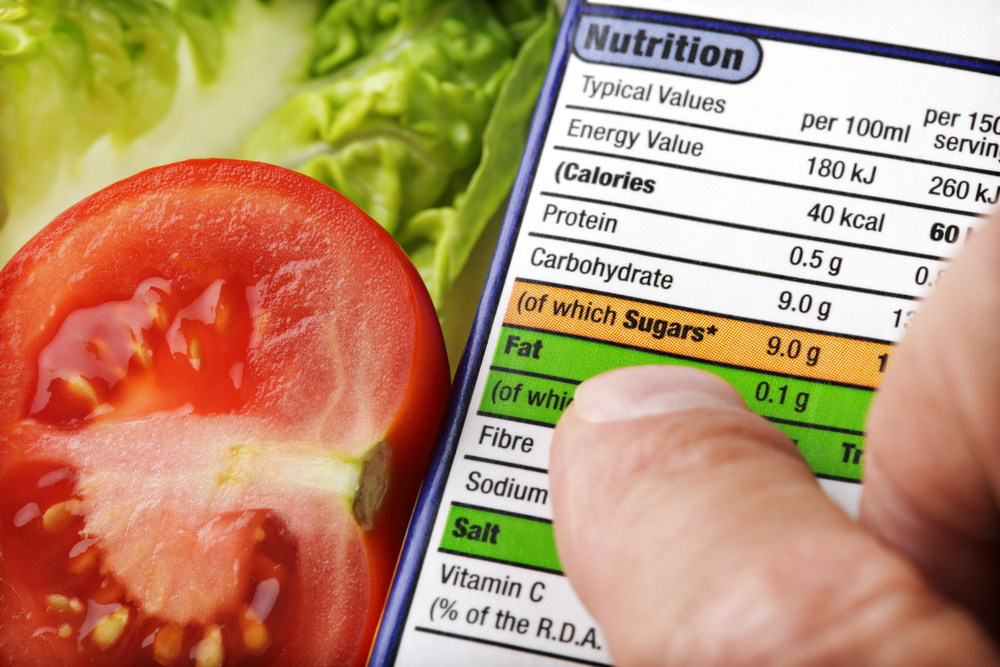Limit or for a couple of weeks even try to eliminate as a reset button, all sugar and refined carbohydrates from your life, these foods are digested too quickly causing huge high then dips in blood sugar, which triggers adrenal hormones. The more refined a food, the faster it hits the blood stream. If you eat more food in its natural form, your blood sugar will be much steadier. Be vigilant. Sugar is added to savoury foods like canned, vegetables, baked beans, condiments like ketchup and even soup.
| Slow-releasing carbohydrates | Fast-releasing carbohydrates |
| Grains – whole wheat, rye, oats, brown rice, Barley, maize, quinoa, millet | Refined grains – white flour, cake, biscuits, white bread, pastries, instant oatmeal, white rice. |
| Beans – lentils, kidney beans, etc. | White and brown sugar, glucose, honey, maple syrup. |
| Vegetables | Potatoes and sweet potatoes* |
| Fruit – especially berries, cherries, apples, pears | Bananas, dried fruit, grapes and fruit juice* |
*Still ok to consume but eat with a protein source i.e. banana and plain yoghurt
The bottom line is the body does need carbohydrate, but it is the quality of the carbohydrate that matters and the balance with protein with each meal. Your brain runs on carbohydrates and that is why you can feel depressed, moody and unable to think straight if you are not eating enough of them. Do no LOW-CARB diets please.
Restricting your carbohydrates over a few weeks has been shown to effect thyroid function by lowering the hormones, thus effecting your metabolism. Too few carbohydrates will cause a blood sugar drop and your body to release adrenaline to raise blood glucose. Resulting in high cortisol levels which encourages the storage of fat around the middle.
Understanding How Much Carbohydrates (Sugar) in Shop Bought Food
Food labels contain so much information, it’s often difficult to know what you should be looking for and what it all means.
But if you want to improve your diet and make healthy choices, it’s important to get into the habit of checking the label.
Most pre-packed foods have a nutrition label on the back or side of the packaging. They can help you choose between products, and keep a check on the amount of foods high in fat, salt and sugars that you’re eating.
There are three ways to check if a product has added sugar or is high in sugar.
- Check the ingredient list: If it’s listed on the ingredients list then it’s added sugar, however natural it sounds.
- Nutrition table on back of pack: In general, on back of pack in the Nutrition Table if: Sugar
High – more than 22.5g of total sugar per 100g
Low – 5g of total sugar or less per 100g
Carbohydrates. … Simple carbohydrates are often listed on nutrition labels as “carbohydrates (of which sugars)”. This includes added sugars and the natural sugars found in fruit and milk.
- Front of pack traffic light system: The figures for sugars on traffic lights are for total sugars, which doesn’t tell you how much of the sugar comes from natural sources, and how much is added, such as sucrose or glucose. Check the ingredients list – if syrup, invert syrup, cane sugar, molasses or anything ending in ‘ose’ is within the first three ingredients, this suggests the food contains more added sugar. Choose an alternative if possible, or be mindful of the portion you eat.
Nutrition labels on the front of packaging traffic light system
All the big supermarkets and many food manufacturers also display nutritional information on the front of pre-packed food. This is very useful when you want to compare different food products at a glance.

Image: Front of Pack Traffic Light System
Reference Intake
Reference Intake has replaced the recommended daily amount (RDA). You might also see it written as RI. Reference intakes are useful guidelines on the amount of energy and nutrients you need for a healthy balanced diet each day. The %RI tells you how much of your daily healthy maximum is in the portion of the product.
The %RI for an adult is based on the following values:
| kcal | Fat | Saturates | Sugars | Salt |
| 2000 | 70g | 20g | 90g | 6g |
Why is eating too much sugar such an issue?
As a nation, we are eating too much sugar. Consuming too many foods and drinks high in sugar can lead to weight gain and related health problems such as heart disease, type 2 diabetes and some cancers. In England, a third of children and two thirds of adults are obese or overweight and treating obesity and its consequences alone currently costs the NHS over £6 billion each year.
Government dietary advice on sugar changed significantly in 2015. In its report on Carbohydrates and Health, the Scientific Advisory Committee on Nutrition (SACN) recommended that sugar intakes should be assessed using a definition of free sugars, replacing non-milk extrinsic sugars (NMES) on which recommendations had been based for the previous 25 years. SACN also recommended that free sugars should not exceed 5% of total dietary energy intake for adults and children from the age of 2 years, halving the previous recommendation for NMES.
SACN defined free sugars as all monosaccharides and disaccharides added to foods by the manufacturer, cook or consumer, plus sugars naturally present in honey, syrups and unsweetened fruit juices. The sugars naturally present in milk and milk products (lactose) and the sugars in the cellular structure of foods were excluded. Please see table below for more detailed information on free sugars.
| Included in the definition of free sugars | Excluded from the definition of free sugars |
| All added sugar in whatever form, including honey, syrups and nectars whether added to products during manufacture or by the consumer during cooking or at the table. This includes ingredients such as malt extract and glucose syrup | Ingredients not included in the definition of sugar used for nutrition labelling, that is, monosaccharides and disaccharides Maltodextrins, oligofructose and sugar substitutes such as polyols (sorbitol) are excluded from the definition |
| Lactose and galactose added as an ingredient to foods or drinks, including lactose in whey powder added as an ingredient | Lactose and galactose when naturally present in milk and dairy products including milk powder |
| All the sugars naturally present in fruit and vegetable (including legumes) juices, concentrates, smoothies, purées, pastes, powders and extruded fruit and vegetable products* | All the sugars naturally present in fresh and most types of processed (dried, stewed, canned and frozen) fruit and vegetables (including beans and pulses) except for juices, smoothies, purées, pastes, powders and extruded products Sugars naturally present in puréed and powdered potatoes and other starchy staples |
| All sugars in drinks except for milk and other dairy-based drinks. Including: all sugars in unsweetened fruit and vegetable juices, fruit and vegetable juice concentrates and smoothies; all sugars in alcoholic drinks; all sugars naturally present in dairy-alternative drinks such as soya, rice, oat and nut-based drinks | Lactose and galactose naturally present in milk and other dairy-based drinks |
| All sugars naturally present in cereal grains including rice, pasta and flour regardless of processing (other than cereal-based drinks) | |
| All sugars naturally present in nuts and seeds regardless of processing (other than nut-based drinks) |

Thank you for reading.
Dip Nut, BSc.(Hons), MSc PHN, ANutr
Nutritional Therapist
M: +44 07957 267 964
eatyourgreens@fionawaring.com
‘Registered with the Association for Nutrition – www.associationfornutrition.org
Protecting the public and promoting high standards in evidence-based science and professional practice of nutrition.’
